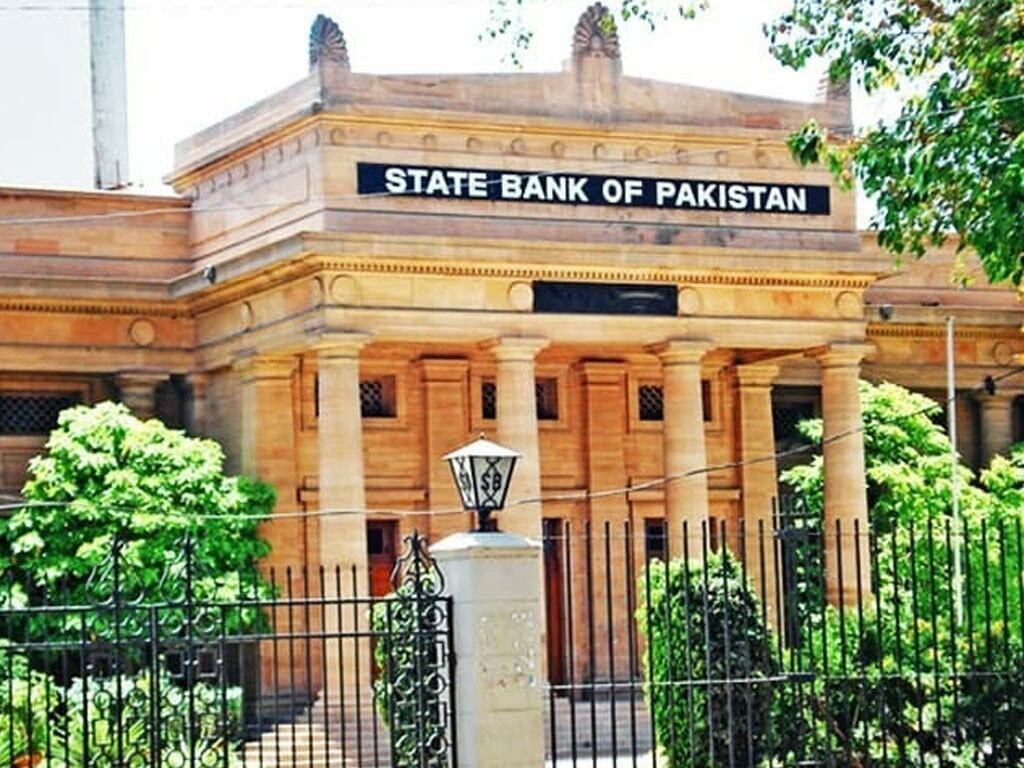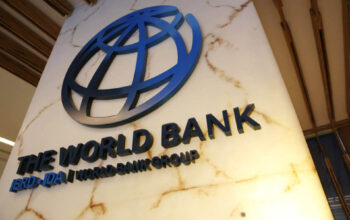By Staff Reporter
KARACHI: The State Bank of Pakistan (SBP) said on Wednesday the expansion of the economy is seen cooling next year, with both internal and external challenges weighing on growth.
Looking ahead, the significant near-term challenges posed by the continued influence of adverse external and domestic developments, which have been exacerbated by the recent floods,” the Governor’s Annual Report 2021-22, the first such report by the central bank said.
“These are manifesting in the form of slowing growth and elevated pressures on inflation and the external position.”
The central bank projects real GDP growth below the previously-announced range of 3-4 percent for FY23.
The report said navigating these challenges in FY23 will require prudent monetary and fiscal policies, steps to curtail food prices, ensuring that the IMF program remains on track, and the timely materialization of planned external inflows.
“In order to ensure that the overall import bill remains contained, it will be critical that the envisaged fiscal consolidation is delivered and that strong measures are taken to curtail energy imports.”
Over the medium-term, in order to avoid a recurrence of boom-busts and to increase the resilience of the economy, structural reforms to boost productivity, export competitiveness, and domestic savings and investment are imperative.
The report said a combination of both external and domestic factors contributed to higher than projected inflation in FY22.
“In particular, stronger than anticipated domestic demand amid an unexpected fiscal expansion, together with more-than-expected increase in global commodity prices and exchange rate depreciation, were the main drivers of inflation in a year that proved to be exceptionally volatile and challenging for policymakers around the world.”
PRICE INFLATION
Average headline National CPI (NCPI) inflation reached 12.2 percent in FY22 from 8.9 percent last year, exceeding the government’s FY22 target of 8 percent as well as SBP’s own inflation projection range of 9-11 percent for the year.
As a result, inflation diverged from the objective of price stability, embodied by the government’s medium-term target of 5-7 percent.
However, Pakistan was not the only country where inflation was higher than official forecasts at the beginning of the year, amid a significantly challenging global environment marked by global supply chain disruptions and the Russia-Ukraine conflict.
With domestic demand accelerating faster than expected, driven in large part by an unplanned fiscal expansion in FY22, the rise in global commodity prices resulted in pressures on inflation, the external account and the Rupee as the year progressed.
The uncertain global exit from the Covid pandemic complicated the timing of policy actions. Nevertheless, the SBP moved to counter inflationary pressures from Q1-FY22, with the pace of monetary tightening calibrated in response to the changing outlook and balance of risks to inflation, financial stability, and growth.
Moreover, the frequency of monetary policy committee meetings was also increased from six to eight times a year, with a view to make the process of monetary policy formulation more responsive to the fast-changing situation.
Cumulatively, the policy rate was raised by 675 basis points during FY22, in addition to tightening of macro-prudential settings to contain domestic demand.
FINANCIAL SECTOR
From the perspective of the SBP’s objective of contributing to the stability of the financial system, the Report notes that although there was some stress on financial markets, leading to volatility and pressures on prices of financial assets, they functioned smoothly without any significant disruption.
The overall domestic financial sector remained stable and resilient throughout the year as the capital adequacy ratio of the banking sector, which has the largest share in the domestic financial sector, remained well above domestic regulatory requirements as well as international standards.
The report also sheds light on the list of measures the SBP took to support the government’s economic policies, in line with its tertiary objective to foster economic development and better utilization of productive resources.
In particular, the Report highlights the SBP’s efforts to actively strive to promote financial inclusion, financial development and documentation of financial transactions in the country.
These include initiatives aimed at increasing remittances and new investments by overseas Pakistanis courtesy of the Roshan Digital Account scheme and other measures; digitizing of payments through Instant Person-to-Person Payments facilitated by Raast; launch of Banking on Equality policy to improve women’s financial inclusion; and introduction of the Digital Bank framework for the setting up of digital banks in Pakistan.
FY2021-22
In its annual Report on The State of Pakistan’s Economy for the fiscal year 2021-22, the central bank said the country’s real GDP growth remained at 6 percent, for a second consecutive year in FY22.
The growth was broad-based as both agriculture and industry saw a notable increase that spilled over to the services sector as well.
Expansionary fiscal stance in FY22, an upsurge in global commodity prices, and the fallout of the Russia-Ukraine conflict, led to a marked deterioration in the current account deficit (CAD).
In addition, the delay in the resumption of the IMF program and political instability exacerbated the country’s vulnerability through the depletion of FX reserves. The resulting depreciation in rupee amplified inflationary pressures by magnifying the effect of global price increase.
Fiscal policy support in the shape of tax incentives for industry, export and construction, a large increase in provincial development spending, tax incentives and subsidies to protect consumers from the impact of rising international oil prices, supported the momentum of economic activity.
Also, the lagged impact of monetary stimulus rolled out during the pandemic, SBP’s targets for housing and construction, and capacity expansions under Temporary Economic Refinance Facility (TERF) and Long Term Financing Facility (LTFF) continued to underpin GDP growth. In addition, the sustained rally in domestic and global demand and receding concerns about the Covid-pandemic also catalyzed the momentum of economic activity during FY22.
However, the impact of accommodative policies contributed to higher than planned growth in the economy, and together with the rapid rise in global commodity prices, posed risks to the country’s macroeconomic stability.
Particularly, this led to a sizable increase in the import bill in FY22 that significantly outpaced the expansion in exports and widened the CAD to a four-year high level.
On the financing side, net inflow of FX loans and liabilities rose considerably compared to last year, but remained lower than planned commitment amid the delay in resumption of the IMF program and domestic political instability, leading to a decline in SBP liquid reserves during FY22.
The external account pressures, together with the appreciation in dollar index especially in the second half of the fiscal year, led to a substantial depreciation in the rupee, which further magnified the combined effect of elevated domestic demand and the global commodity price increase, leading to a rise in inflationary pressures.
On the fiscal side, while the sharp pickup in imports boosted tax collection, a broad-based increase in fuel subsidies widened the fiscal and primary deficit during FY22. The expansion in current spending pared the fiscal space for federal development spending during the year.
Tax collection at both federal and provincial levels nonetheless edged up. FBR taxes achieved a six-year high growth and slightly exceeded the upward revised budget estimate for the year. The major impetus came from import related taxes that constituted more than two-third in overall FBR tax collection in FY22.
The report notes that the experience from FY22 brings to fore once again the need to address the country’s structural weaknesses, such as, a narrow base of foreign exchange earnings and meager inflows of foreign investment. Therefore, a concerted approach is required to encourage increased localization of the manufacturing base, along with the lowering of energy intensity of the economy by ensuring energy efficiency and conservation. Moreover, amid the growing issues related to climate change and inadequate food security, there is an urgent need to formulate a well-thought-out strategy to meet these challenges. Priority should be given to produce new varieties of seeds that are suitable to varying weather conditions and to devise a framework that emphasizes water management strategies to increase agricultural productivity.
Copyright © 2021 Independent Pakistan | All rights reserved




